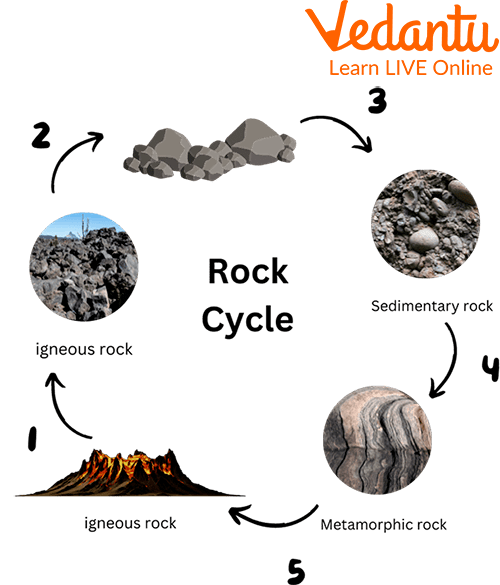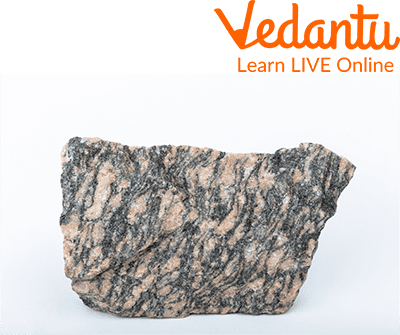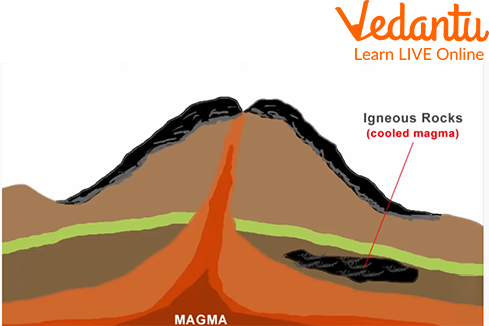




Overview of Facts About Metamorphic Rocks
Every day we see rocks around us lying everywhere on the roads and on the side of roads but have you ever wondered how these rocks are formed and what is the process by which they attain the form they have now? In this article, we will learn all about the rocks, their kinds, how they are formed and what is the process that makes them how they look now. All the rocks all over the world are made up of minerals that are stored in the earth's crust. Different kinds of rocks contain the same or the other minerals but are differentiated on the basis of where these rocks are formed and how they are formed. So let's start learning.

Rocks
Formation of Rocks: Rock Cycle
The Rock cycle is the cycle which describes the whole process of how different kinds of rocks like sedimentary igneous and Metamorphic are formed and how they are related to one another and how they transform into one another over time.
The main steps of the whole Rock cycle are as follows:
A volcano sends the Molten Lava or Rock to the surface of the Earth which in terms cools down and forms the igneous kind of rocks.
The sedimentary rocks eventually disintegrate into small sedimentary fragments due to the effect of climate rivers and other circumstances.
These Rocks eventually become buried deep inside the earth's crust and are covered by other rocks.
Now these buried rocks are worked upon by extreme temperature and pressure until the sedimentary rocks metamorphosis into the metamorphic rocks.
Types of Rocks
Scientifically there are about three kinds of rocks namely sedimentary, igneous and metamorphic rocks.
A rock that has undergone temperature and extreme pressure to transform itself from one form to the other is said to be metamorphic.
If layers of mineral sediment are compressed simultaneously, sedimentary rock is formed.
A rock that is igneous was created from molten lava, either within the Earth or on its surface.

Rock Cycle
In this article, we are going to look at metamorphic rocks and cycle rock. We will discuss all the facts about metamorphic rocks, how they are formed and what are Metamorphic rock examples.
Metamorphic Rock Definition
Scientifically the metamorphic rock definition is as follows. Metamorphic rocks are rocks that are formed under extreme temperatures and pressure below the Earth's surface. Now you must be wondering why not these rocks don't melt under such high temperatures and pressures. The answer to the question is that these rocks do not melt down under such extreme conditions because the chemicals that are present in them change their form from one to another or can even change their lattice shape or the Crystal shape.
As discussed above there are in total three types of rocks that are found on earth. Astonishingly but metamorphic rocks can be formed from any other kind of rock, that is they can be formed from sedimentary or igneous rocks also.

Metamorphic Rock
Metamorphic Rocks Examples
For example, we can say that limestone is scientifically a sedimentary rock but it is transformed into marble by metamorphosing it. Metamorphic rocks examples can be anthracite, granulite, slate and marble. Limestone is an example of sedimentary rock and is the source of marble. Slate is an example of sedimentary rock that is formed from mudstone.
Metamorphic Rocks Information
In this section of the article are listed metamorphic rocks information and these are as follows:
These get created when sedimentary or igneous rocks are transformed. Extreme heat and pressure are what induce the reformation of these rocks.

Formation of Metamorphic Rocks From Other Forms
In addition to being crystalline in form, these rocks are frequently squeezed or flattened.
Rocks that have undergone metamorphism typically exhibit high levels of resistance to deterioration and erosion, making them exceptionally durable and a good bet for construction supplies.
Summary
To conclude all the learnings from this article we can say that rocks are very important in forming what we call the surface of the earth on which we walk and do other activities from farming to things that give us aesthetic pleasure. In this article, we learnt all the related facts about rocks and then we briefly studied what metamorphic rocks are, how they are formed and what functions they perform and also look at various examples of them. With this we would like to end this article and hope that we are very clear and understandable enough to clear all your doubts yet if you still have doubts, feel free to ask in the comments.
FAQs on The Incredible Metamorphic Rocks Facts
1. What is the definition of a metamorphic rock?
A metamorphic rock is a type of rock that has been transformed from its original state by intense heat, pressure, or chemical reactions, a process called metamorphism. The word 'metamorphic' comes from Greek words meaning “change of shape.” These rocks do not melt but are fundamentally altered in their texture, mineral composition, and crystal structure.
2. What makes metamorphic rocks special compared to igneous or sedimentary rocks?
What makes metamorphic rocks special is their origin story. Unlike igneous rocks which form from cooled magma or sedimentary rocks made from compressed sediments, metamorphic rocks are 'recycled' rocks. They start as an existing rock—either igneous, sedimentary, or even another metamorphic rock—and are then changed deep within the Earth's crust without melting, resulting in unique banded textures and new mineral formations not found in the original parent rock.
3. How do heat and pressure actually change a rock without melting it?
Intense heat and pressure change a rock without melting it by causing the minerals within the rock to recrystallize and realign. The heat, sourced from nearby magma or deep burial, makes the atoms and ions in the minerals more mobile. The immense pressure, from tectonic plate collisions or overlying rock layers, squeezes the mineral grains, forcing them to align in parallel layers. This dual action reorganizes the rock's internal structure, forming a new, denser, and often more colourful rock.
4. What are some common examples of metamorphic rocks and what were their original forms?
Some common metamorphic rocks are formed from specific parent rocks. The transformation creates entirely new properties. Here are a few key examples:
- Marble is a metamorphic rock formed from the sedimentary rock limestone.
- Slate, often used for roofing and blackboards, is formed from the sedimentary rock shale.
- Quartzite is a hard, durable rock formed from the metamorphism of sandstone.
- Gneiss, known for its distinct bands of light and dark minerals, is typically formed from the igneous rock granite.
5. Why is marble, used for statues and floors, considered a metamorphic rock?
Marble is considered a metamorphic rock because it is the result of the transformation of limestone. When limestone is subjected to extreme heat and pressure, its original calcite crystals recrystallize into a denser rock with interlocking grains. This process, metamorphism, changes the soft, porous limestone into the hard, often beautifully veined marble that is valued in construction and art.
6. What is the difference between foliated and non-foliated metamorphic rocks?
The main difference lies in their appearance and formation.
- Foliated metamorphic rocks have a layered or banded appearance. This is caused by pressure squeezing the minerals into parallel alignment. Examples include slate, schist, and gneiss.
- Non-foliated metamorphic rocks do not have a layered look because their minerals are not aligned. This usually happens when the parent rock is made of a single mineral and pressure is applied uniformly. Examples include marble and quartzite.
7. Where can we see metamorphic rocks being used in our daily lives?
Metamorphic rocks are widely used in construction and decoration due to their durability and beauty. For instance, slate is very popular for roofing tiles and flooring because it splits into thin, strong sheets. Marble is a prized material for creating statues, monuments, kitchen countertops, and decorative floor tiles. Quartzite is extremely hard and is used as a decorative stone in buildings and for railway track ballast.
8. Can a metamorphic rock change again within the rock cycle?
Yes, a metamorphic rock can absolutely change again. The rock cycle is a continuous process with no end. A metamorphic rock can be subjected to even more intense heat and pressure, transforming it into a different, higher-grade metamorphic rock (e.g., schist can become gneiss). If the heat becomes extreme enough, it can melt into magma and eventually cool to form an igneous rock. Alternatively, if brought to the surface, it can erode into sediment and later form a sedimentary rock.









